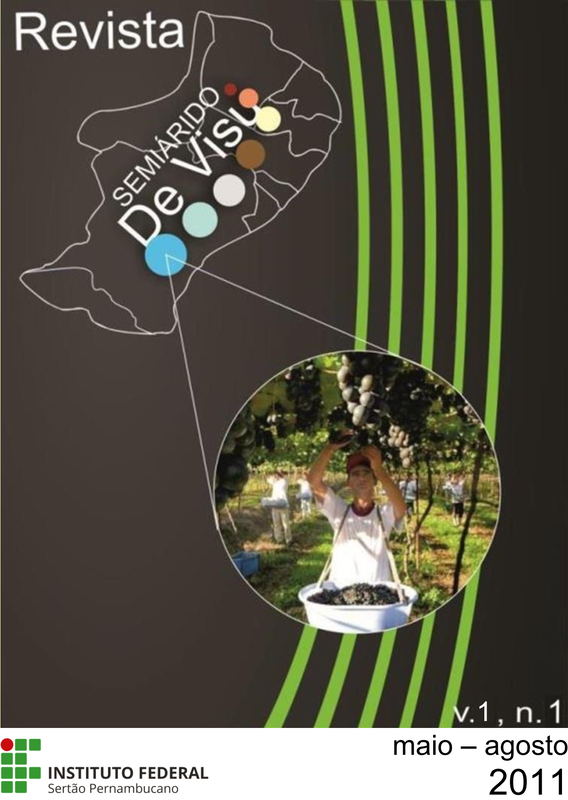Preparation of umbu liqueur with different alcohols
Visualizações: 602DOI:
https://doi.org/10.31416/rsdv.v1i1.208Keywords:
sensory analysis, grain, grass, steeping, tuberAbstract
The objective of this study was to process umbu liqueur by steeping it in four types of alcohols: cereals, tubers, grass and deodorized grass, testing the preference in relation to flavor and aroma, evaluating purchase intention. The umbus used were randomly purchased in free markets in Petrolina-PE. The umbus had their stems removed and were immersed in different alcohols: 01 (grass alcohol), 02 (grass deodorized alcohol), 03 (cereal alcohol) and 04 (tuber alcohol), where they were macerated for 30 days. They were purified by filtering, decanting, siphoning and clarification. After the addition of syrup, the maturation was started through a period of 90 days. The liqueurs were bottled and labeled in order to perform the sensory analysis through quantitative and acceptance methods. In the analysis, the four kinds of alcohols were suitable for the preparation of umbu liqueur, but the liqueur made with grass
alcohol was the most preferred by the judges in all aspects analyzed, which is an advantage to the small producer because of its low-cost. The liqueur produced with tuber alcohol was less accepted.
References
AQUARONE, E.; LIMA, U.A.; BORZANI, W. Alimentos e bebidas produzidas por fermentação. São Paulo: Edard Blucher, 1993, v. 5, 227p.
BARROS, J. C.; SANTOS, P. A. dos; ISEPON, J. S.; SILVA, J. W. da; SILVA, M. A. P. da. Obtenção e avaliação de licor de leite a partir de diferentes fontes alcoólicas. Revista Global Science and Technology. v. 1, n. 4, p. 27-33, 2008.
BRASIL. Decreto n. 2.314, de 4 de setembro de 1997. Regulamenta a lei n° 8.918 de 14 de julho de 1994, que dispõe sobre a padronização, a classificação, o registro, a inspeção, a produção e a fiscalização de bebidas. Diário Oficial da República Federativa do Brasil, Brasília, 5 set. 1997. Seção 1. p.19549 -19555.
CIPRIANO, L. W.; SANTOS, M. N. G.; PAIXÃO, A. E. A.. Processamento de licor a partir de frutas regionais. In: CONGRESSO BRASILEIRO DE FRUTICULTURA, 17, Belém, 2002. Anais. Belém, Sociedade Brasileira de fruticultura, 2002. CD ROM.
FARIA, E. V. de YOTSUYANAGI, K. Técnicas de análise sensorial. Campinas, SP: LAFISE/ITAL, 2002. 116 p.
MORAES, M. A. C. Métodos de avaliação sensorial dos alimentos. Campinas: Unicamp/FEA, 1985, 85p.
MUÑOZ, A.M., CIVILLE,G.V., CARR,B.T. Sensory evaluation in quality control. New York: Van Nostrand Reinhold, 1992. 240 p.
PENHA, E. M.; DELLA MODESTA, R. C.; GONÇALVES, E. B.; SILVA, A. L. S.; MORETTI, R. H. Efeito dos Teores de Álcool e Açúcar no Perfil Sensorial de Licor de Acerola. Brazilian Journal Food Technology. v.6, n.1, p.33-42, 2003.
PERALTA, M. O. U.; HUAPAYA, M. D. A.; MOLINA, O. G. Evaluación sensorial de los alimentos. Lima: Editorial Agraria, 1 ed., 1999, 197p.
SILVA, M. A. A. P. Métodos de Avaliação Sensorial dos Alimentos, FEA/UNICAMP, 2004.
TEIXEIRA, L. J. Q.; RAMOS, A. M.; CHAVES, J. B. P.; SILVA, P. H. A. da; STRINGHETA, P. C. Avaliação tecnológica da extração alcoólica no processamento de licor de banana. Boletim do Centro de Pesquisa e Processamento de Alimentos. v. 23, n. 2, p. 329-346, 2005.
TEIXEIRA, L. J. Q.; RAMOS, A. M.; CHAVES, J. B. P.; STRINGHETA, P. C. Testes de aceitabilidade de licores de banana. Revista Brasileira de Agrociência. v. 13, n. 2, p. 205- 209, 2007.















